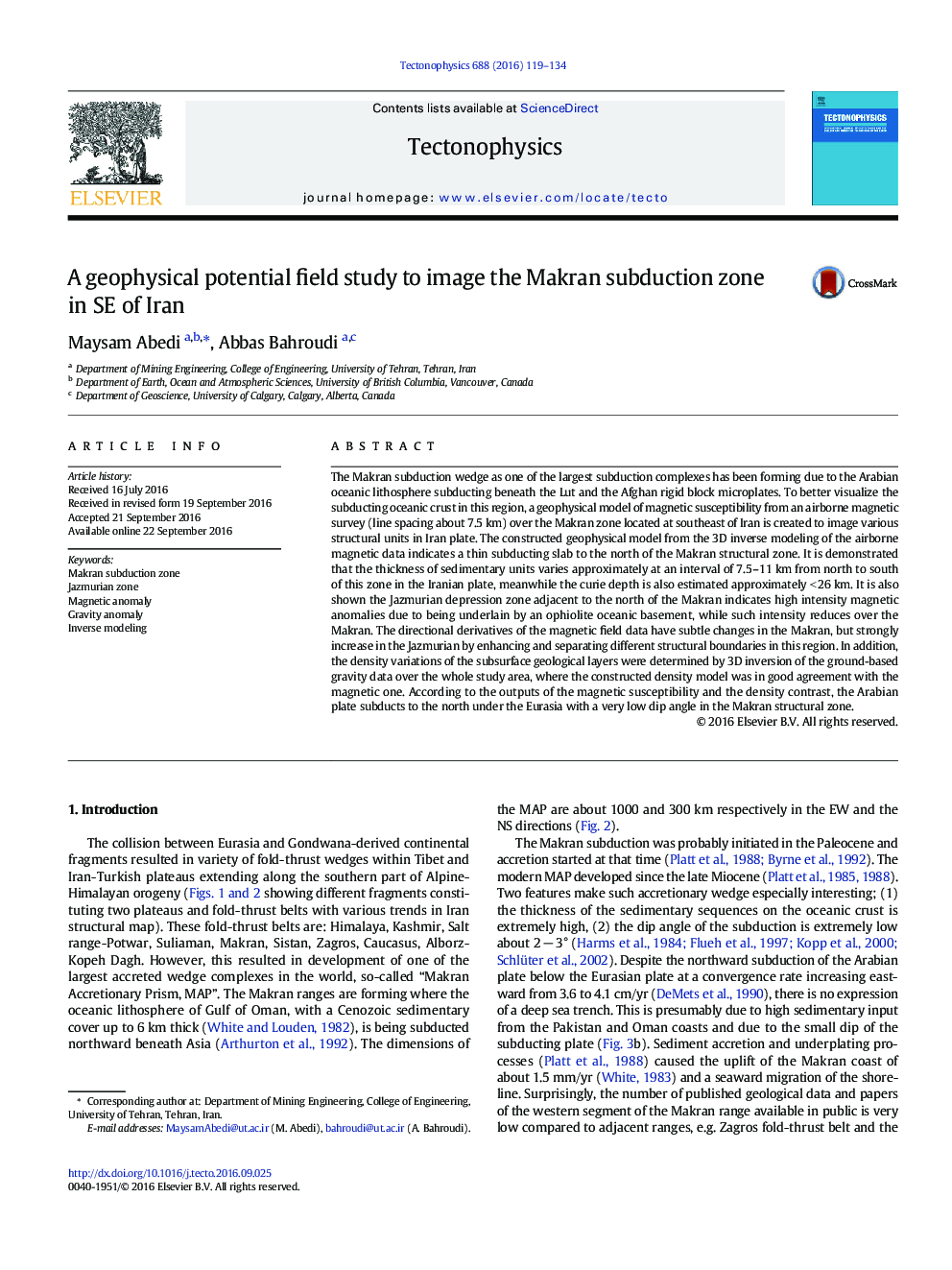| کد مقاله | کد نشریه | سال انتشار | مقاله انگلیسی | نسخه تمام متن |
|---|---|---|---|---|
| 6433247 | 1636710 | 2016 | 16 صفحه PDF | دانلود رایگان |
- The structural geology across the MAP is investigated employing potential field data.
- The magnetic susceptibility and density variations mapped down to a depth of 100Â km across the MAP.
- The imaged potential field data led to the determination of a Subduction Zone in SE of Iran.
- Arabian plate subducts to the north under the Eurasia with a very low dip angle in the MAP.
The Makran subduction wedge as one of the largest subduction complexes has been forming due to the Arabian oceanic lithosphere subducting beneath the Lut and the Afghan rigid block microplates. To better visualize the subducting oceanic crust in this region, a geophysical model of magnetic susceptibility from an airborne magnetic survey (line spacing about 7.5Â km) over the Makran zone located at southeast of Iran is created to image various structural units in Iran plate. The constructed geophysical model from the 3D inverse modeling of the airborne magnetic data indicates a thin subducting slab to the north of the Makran structural zone. It is demonstrated that the thickness of sedimentary units varies approximately at an interval of 7.5-11Â km from north to south of this zone in the Iranian plate, meanwhile the curie depth is also estimated approximately <Â 26Â km. It is also shown the Jazmurian depression zone adjacent to the north of the Makran indicates high intensity magnetic anomalies due to being underlain by an ophiolite oceanic basement, while such intensity reduces over the Makran. The directional derivatives of the magnetic field data have subtle changes in the Makran, but strongly increase in the Jazmurian by enhancing and separating different structural boundaries in this region. In addition, the density variations of the subsurface geological layers were determined by 3D inversion of the ground-based gravity data over the whole study area, where the constructed density model was in good agreement with the magnetic one. According to the outputs of the magnetic susceptibility and the density contrast, the Arabian plate subducts to the north under the Eurasia with a very low dip angle in the Makran structural zone.
Journal: Tectonophysics - Volume 688, 12 October 2016, Pages 119-134
